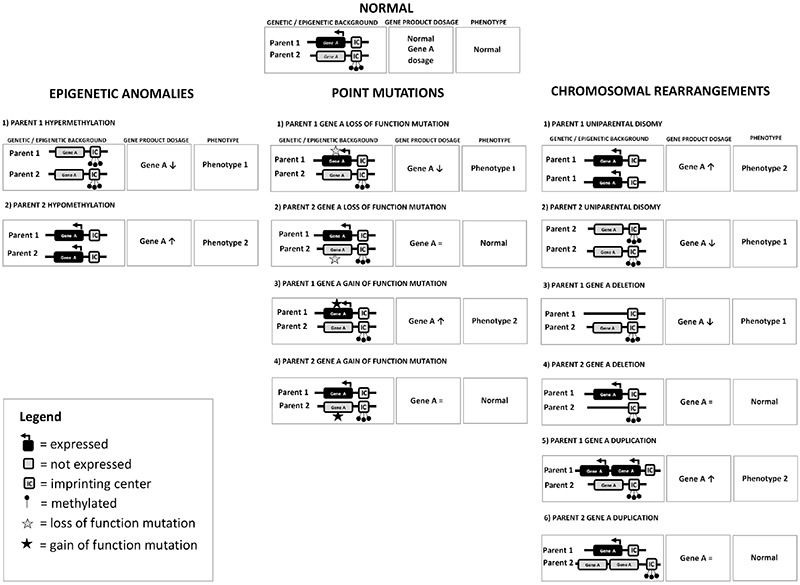Figure 1.

Schematic representation of the molecular mechanisms responsible for altered imprinted gene expression. At the top normal functioning of a paradigmatic chromosomal region subjected to imprinting is reported: on the allele inherited from parent 1, the imprinting center (IC) is unmethylated and gene A is expressed, while on the allele inherited from parent 2, gene A is silenced by IC methylation. This leads to a balanced expression of gene A, corresponding to the normal phenotype. Conversely, imbalance between the expression of the imprinted gene leads to a pathological phenotype: a deficiency of gene A leads to phenotype 1, while an excess of gene A leads to phenotype 2. Phenotype 1 and phenotype 2 may have antithetical characteristics (mirror phenotypes). In the left column, epigenetic anomalies leading to disturbed expression of imprinted genes are shown. In the middle column, point mutations and in the right column, uniparental disomy, deletion and duplication affecting the imprinted gene are reported. If the point mutation or the deletion/duplication hits the expressed gene, it will lead to a phenotype while, on the opposite, if they involve a normally silenced gene, they will not result in a phenotype: in both cases, the genetic anomaly could be transmitted to the offspring
